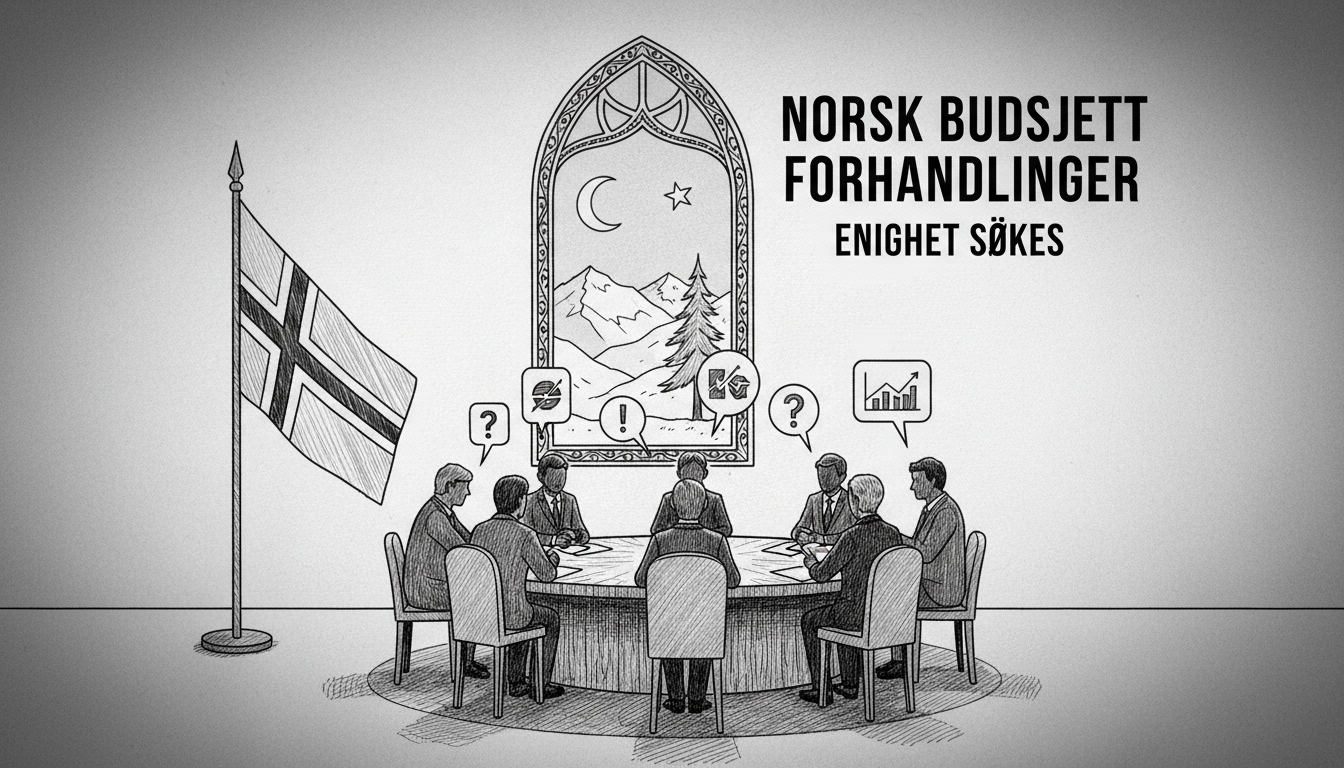Five left-leaning Norwegian political parties have gathered around the negotiation table to hammer out a state budget agreement. The Labor Party must secure support from the Green Party, Red Party, Center Party, and Socialist Left Party to achieve parliamentary majority for their budget proposal.
This marks the first time the Green Party and Red Party are participating in majority budget negotiations following their strong electoral performances. The Green Party's negotiation leader Ingrid Liland served carrot cake with tutti-frutti sprinkles at Parliament, signaling the start of high-stakes talks.
Liland emphasized the environmental focus of her party's position. She stated that Norway needs new directions in oil policy and significant changes in environmental approaches. The five parties have only two weeks to reach consensus before the December 5 parliamentary finance debate.
Center Party leader Trygve Slagsvold Vedum maintained his party would stand firm on their program and mandate. He suggested that any party seeking majority support should check alignment with their platform beforehand.
The negotiations represent a crucial opportunity for the four smaller parties to influence government policy. They can achieve this through securing additional funding for their priority areas or forcing policy changes on the government. The discussions involve both financial allocations and specific policy proposals that could bind the government's hands.
Smaller parties effectively gain veto power through these negotiations, particularly on contentious issues like new oil exploration or seabed mining. For the Labor Party, the primary objective is demonstrating their ability to maintain unity among left-leaning parties and secure budget majority.
Labor's negotiation leader Tuva Moflag acknowledged the challenge of reconciling all demands while noting many common elements among the proposals. The party faces pressure to control spending and avoid criticism for overheating the economy.
Budget negotiations typically face financing challenges, and this round proves no exception. While the Green Party, Red Party, and Socialist Left Party propose tax increases to fund their initiatives, neither Labor nor the Center Party supports this approach. This creates pressure to find alternative funding sources, potentially through cuts to other programs or increased use of oil fund revenues.
Historical context shows Norwegian budget negotiations often extend until the December deadline, with last-minute compromises becoming necessary. The current political landscape reflects Norway's tradition of minority governments requiring cross-party cooperation, though the specific combination of five parties marks a new development in Norwegian politics.
The Center Party already secured two victories before formal negotiations began. Free ferry services and student debt cancellation in district municipalities, both campaign promises from Labor, will proceed despite unclear financing for these approximately 1 billion krone measures.
Common demands across the four smaller parties include strengthening municipal finances to ensure basic services like kindergartens, care services, and public transport. The Red Party and Socialist Left Party particularly emphasize increasing social benefits and reversing what they term unsocial cuts to support schemes.
The Socialist Left Party specifically demands free after-school programs for fourth graders, completing a reform they initiated previously. This reflects Norway's ongoing commitment to supporting working families through public services.
International observers note these negotiations could signal Norway's future direction on climate policy and resource management. The involvement of environmentally focused parties in budget talks may influence the country's transition from oil dependence toward renewable energy solutions.
The December 30 deadline creates time pressure, but Norwegian political tradition suggests parties will find compromise solutions that maintain government stability while addressing key constituency concerns.

